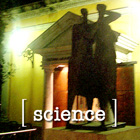
|
||||||||||||||||||
|
NEW MICROWAVE ENGINE APPLIES THEORY OF RELATIVITY ELECTROMAGNETIC DRIVE COULD MAKE WINGS, WHEELS, COMBUSTION OBSOLETE 27 September 2006 A new breakthrough in propulsion technology may enable a fuel-free engine with no moving parts to use microwaves to push satellites through space and automobiles on earth. The science is complicated and controversial, but appears to be sound and takes advantage of Einstein's landmark theory of relativity to turn contained microwaves into a propulsion system, in the form of a non-mechanical engine. The electromagnetic drive (emdrive) system is revolutionary because it enables human technology to interact with the physical environment in ways previously only dreamed in science fiction. Observers have referred to it as a Star-Trek-style "warp drive", though for now it is far less powerful. It depends on relativity specifically, because the microwaves inside sealed and specially shaped drive capsules "propel" the engine not by pushing againt the air or the road, or the rarefied material of outer space, but exhibiting more force against one end of the interior of the drive capsule, playing on the separation between the "frame of reference" within which it functions and that of the air or space outside. There is, interestingly and unfortunately, some opposition to the new technology from companies responsible for the manufacture of satellites and drive systems used in satellites. That's because the electromagnetic drive could expand engine life (satellite life) by ten-fold and reduce weight (and so materials used [read: purchased]), by the same factor. At present, the amount of thrust generated by the emdrive system is minuscule, about 300 millinewtons, not nearly enough to make an automobile go on the ground. New breakthroughs in superconduction could multiply that figure by millions of times, bringing the thrust to 30,000 newtons per kilowatt, "enough to lift a large car", according to the New Scientist. If the emdrive system can be magnified to such levels of performance, automobiles could be made to hover, no longer needing wheels, and aircraft could be held aloft, while liquid-hydrogen-powered turbines provide forward thrust, eliminating wings, blades and atmospheric contamination. It is now clearly a concept that piques the interest of industry leaders, especially those who see a strategic or capital benefit. One Chinese firm has sought out the emdrive's creator, as has US space agency NASA, believing it could revolutionize if not everyday locomotion then at least commercial satellite navigation and lifespan. [s]
BACKGROUND: Philip Ball reports in the New Scientist that discoveries in the quantum properties of graphene, a single-atom-thick sheets of interlinked carbon atoms may hold the secret to superfast computing, beyond the physical capacity of silicon. The unique material is obtained by flaking or peeling individual sheets away from graphite. [Full Story] BEYOND THE BIG BANG, THE MEMBRANE MULTIVERSE The 'universe' we know as all-encompassing, the vague, probably never to be finally defined concept of the structure of physical reality, may actually be one of many such distinct self-contained, self-sustaining phenomena, with distinct physical properties and corresponding physical laws and tendencies, unified membrane cosmologies adrift in a 'superfluid' soup, at times colliding with incredible energy diffusion, creating whole new universes. [Full Story] SCIENCE SAYS EVOLUTION WORKS The journal Science, in selecting its breakthrough of the year, decided to feature a series of scientific advances demonstrating how evolution works. At the end of a year that has seen a growing marginal movement in the US to displace evolution as mere conjecture in favor of the untested, religiously based "intelligent design" argument, Science intends to proactively defend science, as such. [Full Story] |
|||||||||||||||||
|
||||||||||||||||||









